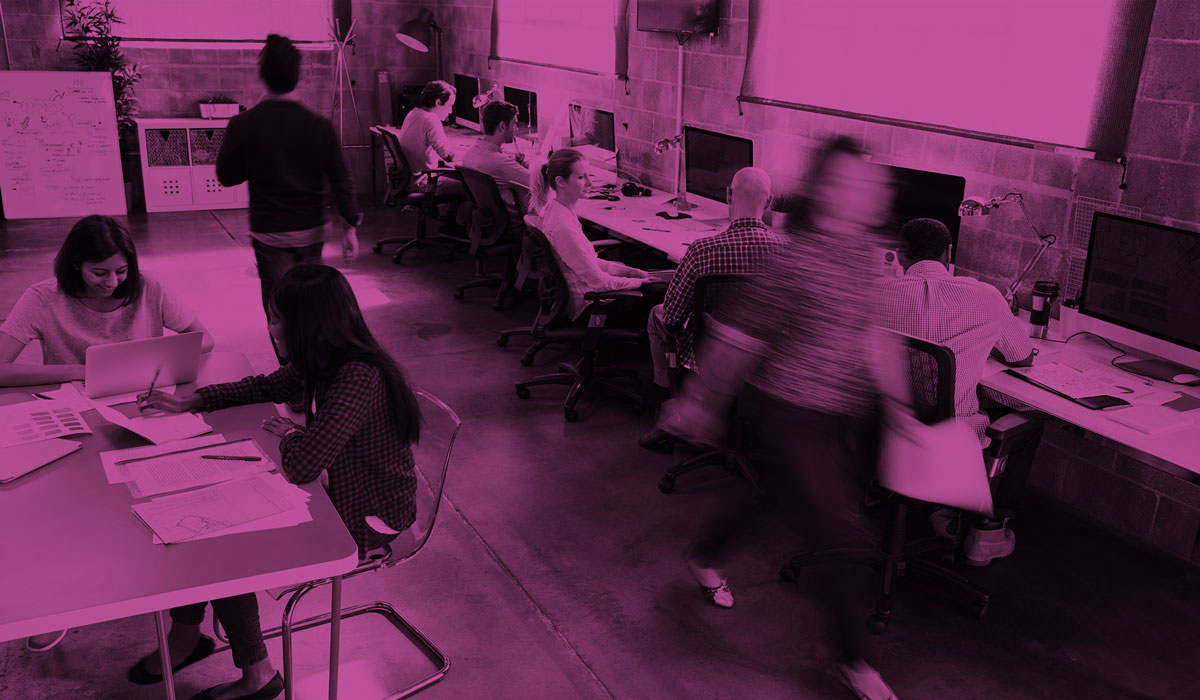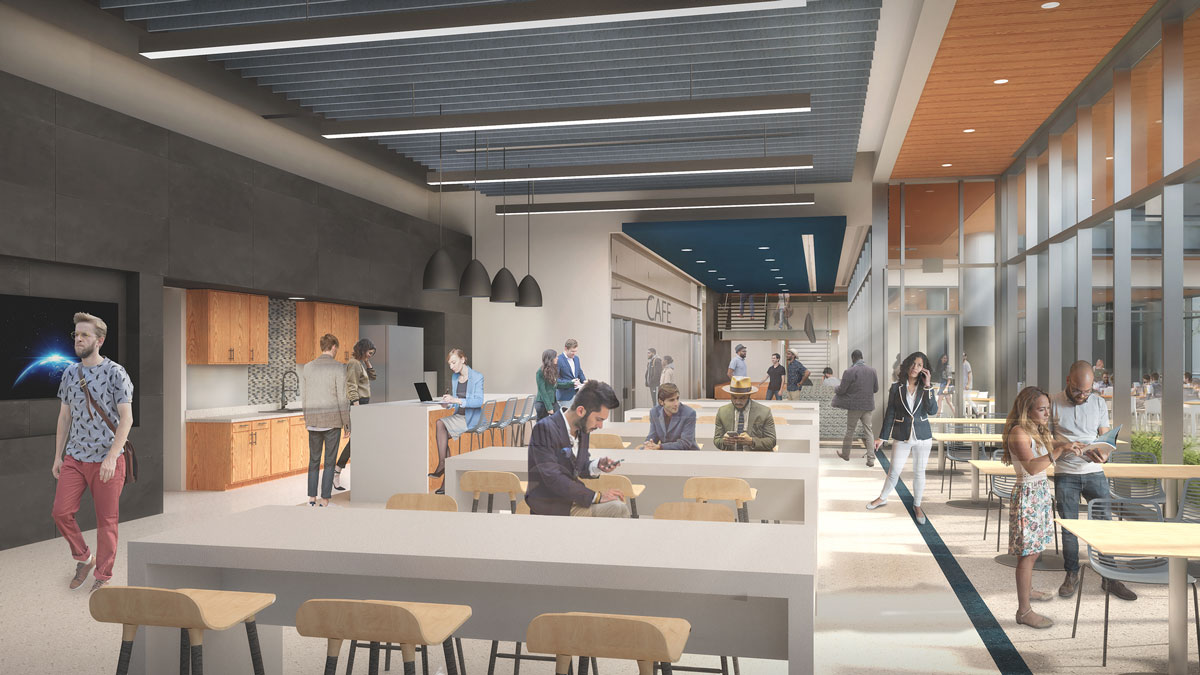9 Tips for Effective Change Management

At its core, change management seeks to maximize the ROI of a physical space by addressing fundamental aspects of culture, structure, and language to develop a durable workplace strategy that transforms behaviors and delivers measurable results.
w
Achieving those results, however, requires an acknowledgement of human resistance to change and action to mitigate those growing pains from the start. Clark Nexsen’s Paul Battaglia has observed the potential pitfalls of organizational change and offers the following tips for establishing a person-centered change management approach.
w
Well-executed change management is a cultural movement – it surpasses services such as programming, FF+E, and move management, and delves into the details of how a workplace functions, from the inside out. It does this by first defining what the organization wants to achieve through this new space, even before programming begins; using those principles as a litmus test for every decision made throughout the design process; and concludes by effectively, thoroughly acclimating occupants to their new physical environment. Acclimation is critical – by training people on how and when to use different space types, new technology, equipment, and furniture, we minimize stress and ultimately make the change more powerful.
1. Clearly articulate the objectives and define the corresponding design principles
Goals, goals, goals. Where are we now? Where do we want to go? These are just some of the questions that come into play before programming begins. Establish parameters at the beginning for the design team and promote accountability for all involved. Create guiding principles and stick to them. This includes everything from culture and operations to behavior and interaction – in other words, “What are we trying to achieve and how will the new environment support it?” By clearly outlining business objectives from the start, we can more effectively design the right spaces, implement the desired changes, and work to alleviate conflict before it arises.
2. Organize stakeholders into effective task groups
By our people, for your people. At the center of every organization is its people. Therefore, it’s no question that making changes to a workplace directly affects and involves its daily occupants. Including employees from different roles and perspectives in the early stages of a change management process is an effective way to source issues, pilot/test drive solutions, and prepare future “ambassadors” who will support their colleagues in adapting to the new space. Adapting to change isn’t linear and it’s also important to recognize that some employee groups will need more support and training than others. By designating “ambassadors” and creating strategic task groups of people to explore different topics and concerns, these individuals create a critical link between the design team and their departments and serve as a catalyst for success.
3. Communicate workplace strategy: how and why
Communication is key – always. To keep employees in the loop, it is important to regularly share information and updates throughout design, construction, and occupation. This also helps to acclimate people to the change before it happens. What’s better than being ahead of the curve? One great way to do this is by engaging your communications and marketing divisions to disseminate information in a manner best suited to the organization. After all, these are your experts. Establish communication and feedback loops within the company, creating an open forum for presenting concerns and reconciling them. For example, at Ferguson’s new HQ3 building, the intention is to integrate a new workplace strategy that can then be applied from HQ3 to other locations.
4. Incrementally transition toward future state
Don’t go cold turkey. Change is inherently difficult That’s why it’s critical to ease people into their new environment and the expectations for its use in an incremental manner. For example, let’s say an organization has decided to switch over their internal communication system. Rather than rolling out the new product with minimal training and completely removing the old one all at once, a better practice is to introduce the new system in a soft launch, allowing employees to get a feel for it before the official switch. The soft launch is accompanied by group training sessions, instructions, and a prospective switch-over date. The transition provides a period of time for people to adjust and feel comfortable with a new system. Change management should be handled with a similar methodology.
5. Utilize mockups and test drive FF+E alternatives
Seeing is believing. Providing a visual component in conjunction with the logistical details can be very effective. Instead of simply reading about the new, open concept office layout, give people a chance to see and experience it. Present mockups of new spaces. Bring in furniture samples and let them test drive these new FF+E alternatives. Pilot programs allow incremental adjustment and enable people get a real feel for the change, as well as a chance to provide feedback.
6. Consider how technology and corporate policy support or hinder aspirations
Avoid headaches. We live in an age where technology is constantly advancing. Consider how you want people to work in their new space and whether the existing technology and policies make that both possible and easily accessible. Introducing new policies and technology without considering how they impact each other and providing support to your people will ultimately leave everyone frustrated. Similar to Tip 5 regarding mock ups, testing, and pilot programs, it is important to provide your people with training and a series of steps toward adopting new technologies, policies, and spaces. Expecting overnight adoption isn’t realistic, but by creating a plan and providing support, adoption over time can be realized.
 As part of Ferguson’s cultural goals for HQ3, the varied workspaces, tech support, and opportunities for flex hours and telecommuting benefit their associates and the company in multiple ways. Associates can be flexible in how they work within HQ3 as well as outside of it, and Ferguson clients benefit from built-in resiliency and a continuity of operations in the event the physical office isn’t open.
As part of Ferguson’s cultural goals for HQ3, the varied workspaces, tech support, and opportunities for flex hours and telecommuting benefit their associates and the company in multiple ways. Associates can be flexible in how they work within HQ3 as well as outside of it, and Ferguson clients benefit from built-in resiliency and a continuity of operations in the event the physical office isn’t open.
7. Develop an appetite for the new workplace; enter eager and ready to use the facility
Get excited together. At this point, everyone recognizes they’ll be moving into a new workspace and that it will be different, perhaps in significant ways. It’s particularly important to incrementalize the cultural and behavioral shifts that will be necessary to fully benefit from the new environment to help generate positive buzz. Ambassadors play an important role here, as they should be helping to encourage and identify the early adopters. These people will be instrumental in helping spread the new practices and supporting all employees in adopting new ways of working.
The physical workplace has the ability to amplify a positive, engaged culture by facilitating, through space design, the work behaviors that support corporate goals. ‘Practicing’ these behaviors in the existing or temporary workplace, even if less than optimal, positions employees and the culture to fully capitalize on the benefits of their new environment.
A good example of this is one I saw take place in a school rather than a workplace, but the principles are the same. Brickell Academy is known for education customized to each student’s unique learning style; their dance program, in particular, supports kinetic learners. Their former space constrained the program’s ability to function optimally, but both the teachers and students persevered as their new facility was being built. Now in their new home – a space ideally suited to their needs and culture – the dance program and its students are flourishing.
8. Identify issues and refine training, space, and communication in response
Iron out the kinks. The process isn’t over once move in is complete. Fully adapting to a new workplace, often with new behavioral intentions, takes time, feedback, and revision. Provide employees with pulse surveys to gauge satisfaction and comfort levels, and pinpoint opportunities to improve their experiences. This feedback might inform new or additional training, prompt specific communications, or even indicate that tweaks to the physical environment are needed. People aren’t stagnant and our workplaces, shouldn’t be, either. The best way to identify issues is to go directly to the source – your people.
9. Desired behaviors should be modeled by leaders at all levels
Set the example. At the end of the day, the most important goal of change management is to enable people to successfully and comfortably use their new workplace. An authentic way to promote the utilization of new spaces and features is for executive level management to model the desired behaviors – demonstrating the culture they want to see in the new environment. There is little more powerful than seeing your CEO bring his or her tablet and coffee over to a soft seating area and read, work, or strike up conversation before heading off to the next meeting. This sends the message that “this is for everyone” and leadership is invested in using the new spaces, too.
Fundamentally, succeeding at change management is about making sure you maximize the opportunity. Invest the right time and resources in determining your goals and use those principles to confirm or correct the subsequent decisions. Change management and culture are often discussed together for a reason – they can work hand in hand. An environment can amplify the culture, but the culture must come first and you need to define what you’re amplifying.
Paul Battaglia, AIA, was a principal and vice president of Business Development who joined Clark Nexsen in 2011. Paul left in 2022.